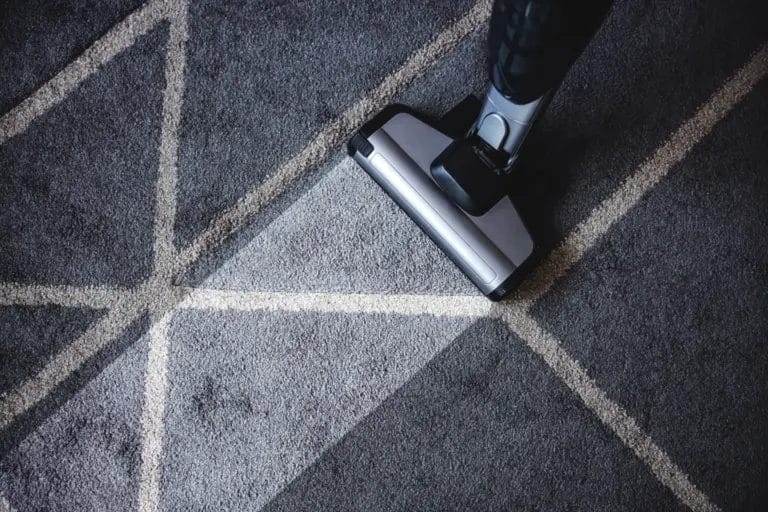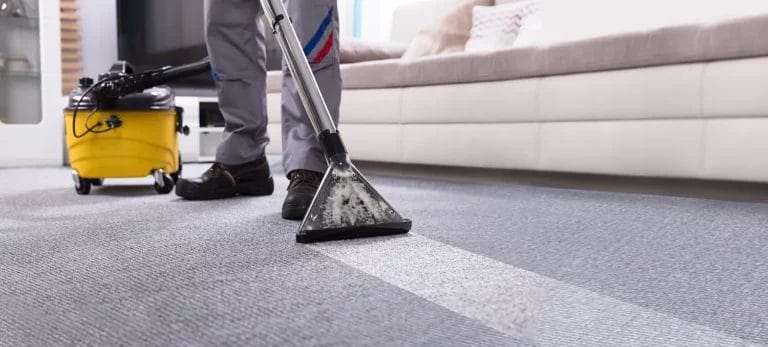You wear a lot of hats as a cleaning business owner — boss, scheduler, sometimes even mop-wielder. But when someone on your team gets hurt, there’s one more role you need to take on: protector. Do you know what to do when a cleaner is injured at work?
Injury claims can seem scary, especially with all the paperwork and rules. But with a little guidance and care, you can handle it with confidence. Learn the right steps to take, mistakes to avoid, and how to keep your team (and your business) moving forward.
Quick Tip: Workers Comp vs General Liability
How to know which insurance applies if someone gets hurt at a worksite:
- Your cleaner is hurt? → Workers comp insurance is designed to cover costs for your employees’ work-related injuries
- Someone else is hurt? → General liability, part of your cleaning business insurance, helps if others are injured from something related to your or your employees’ work
Learn more about the differences in our guide to cleaning insurance and bonding.
The First 24 Hours: Your Injury Response Protocol
If a cleaner is injured at work, knowing how to respond quickly can make a big difference. The first 24 hours can make or break your cleaner injury claim and the impact on your business. Follow these steps after an incident.
1. Ensure Your Employee Gets Immediate Medical Attention
If a cleaner who works for you is injured at a job site, make sure they know to stop working right away. If the injury is serious, call 911 for emergency medical help. If it’s not too bad, help them get to a nearby urgent care clinic.
- Don’t try to self-assess the injury unless you’re certified in first aid
- Be kind and calm, talk to them, and help them feel safe
- Offer to contact their emergency contact or go with them to ease their stress
- Tell the paramedic, doctor, or nurse what happened and what help you gave
Even if the cleaner says they’re fine and doesn’t want help, you still need to follow your injury plan.
Once they’re okay, walk them through what happens next: what forms to fill out, who to talk to, and what deadlines to remember.
Pro Tip: Have a go-to clinic or provider already listed in your workplace safety plan. This saves time during emergencies and ensures your team gets consistent, reliable care.
2. Secure and Assess the Area for Ongoing Risks
After the injured worker is taken care of, look around the area where it happened. Walk through and check for anything that could be dangerous to others, like:
- Spilled liquids or leftover chemicals
- Broken or damaged equipment
- Items on the floor that are blocking walkways or that someone could trip on
- Poor lighting or stuffy air
If you see a problem, fix it fast. Block off the area so no one else gets hurt. Put up signs, move people away, and stop nearby work if needed.
Take a few photos of the area to help with your records, just in case you need to file a report or a cleaner injury claim later.
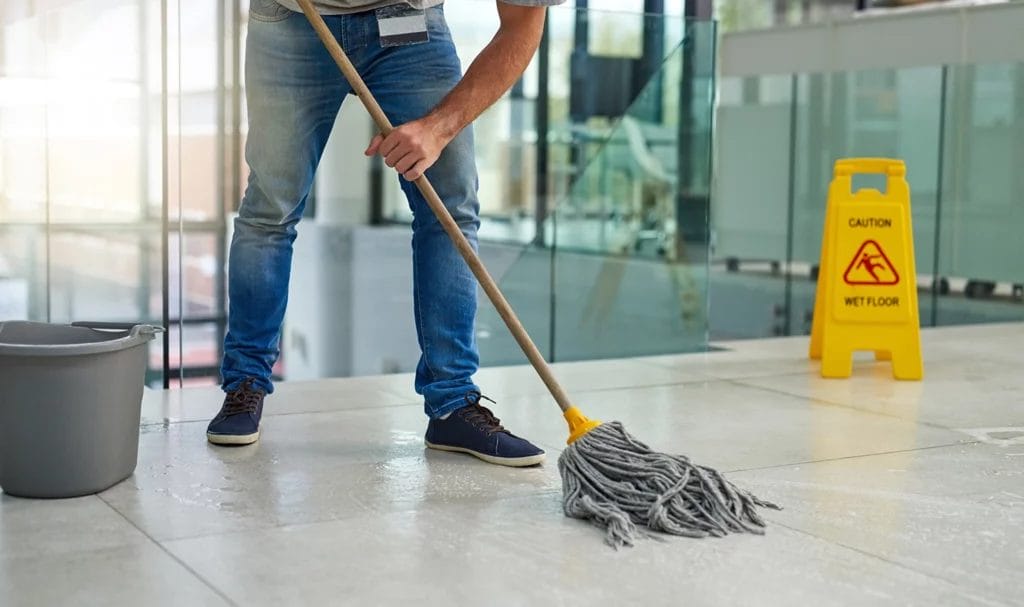
3. Make a Report About What Caused or Led Up to the Cleaner Injury
Write down what happened:
- Who got hurt
- What the injury was
- Where and when it happened
- How it happened
- The names of anyone who saw it occur
Writing this down helps protect your business and keeps the claim process clear. To make a strong report, try to include:
- Photos: Take clear pictures of where the injury happened, any messes or hazards, and any tools or equipment involved. Make sure the date and time show up on the photos.
- Witness statements: If anyone saw what happened, ask them to write down what they saw or heard. Get their name, contact info, and where they were at the time.
- Equipment involved: List any tools or machines being used, their condition, and if any safety parts were broken or missing.
- Your response: Write down what you did to help, like first aid, calling 911, or closing off the area. A timeline of your actions shows you handled things responsibly.
If you’re not the person in charge of workplace injuries, let that person or your HR department know as soon as the injured cleaner is safe and getting care.
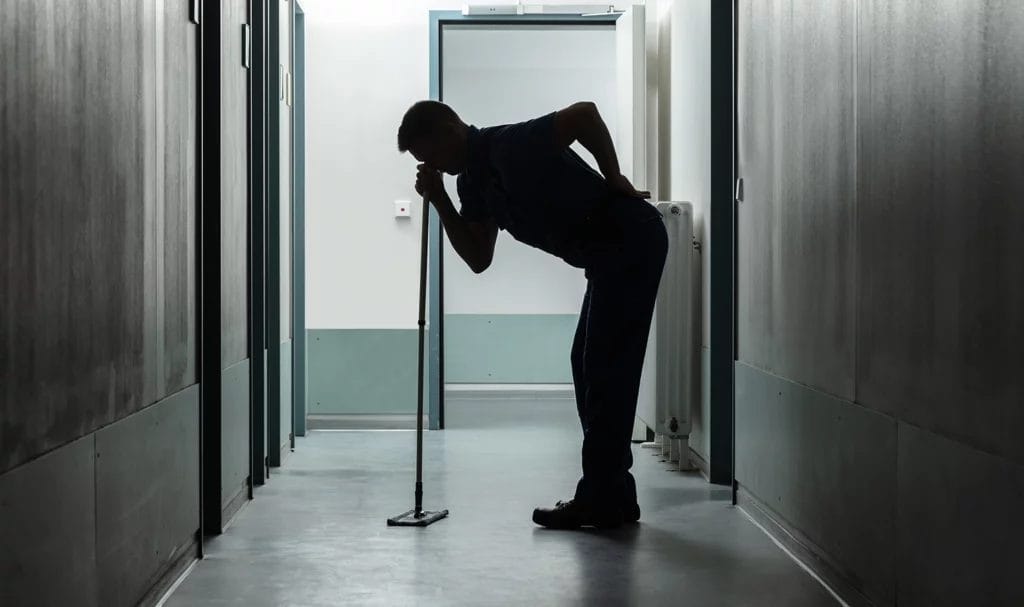
Common Cleaner Injury Claims (& What They Might Cost You)
Cleaning jobs may seem simple, but the work can be tough, and sometimes even dangerous. Accidents happen more often than you might think. Here are some common injuries cleaning teams face, and how much they can cost your business:
Slips and Falls
Average cost: $10,000 to $50,000+ per claim
Slippery floors, loose cords, and uneven ground can cause cleaners to fall. These accidents are the most common, and they can be serious. Think sprained wrists, concussions, or even permanent injuries. One fall can lead to months of recovery and a hefty bill.
Chemical Burns and Exposure
Average cost: $10,000 to $100,000 per claim
Strong cleaning products like bleach or acid can hurt skin and eyes. Some workers may need just a bandage and rest, while others might need a specialist. And if they’re exposed to these chemicals over and over, it can cause long-term health problems.
Repetitive Strain Injuries (RSIs)
Average cost: $10,000 to $30,000 per claim
Doing the same movements over and over — like scrubbing, lifting, or mopping — can wear down the body. These injuries can lead to ongoing pain, physical therapy, and sometimes changes to what the cleaner can do at work.
High-risk settings can also drive up costs for cleaner injury claims. It often means bigger hazards, longer recovery times, and more expensive claims. Some examples:
- Commercial kitchens: Greasy floors make slips and falls more likely
- Hospitals / other biohazard cleanup settings: Strong chemicals are needed, which raises the risk of burns or breathing problems
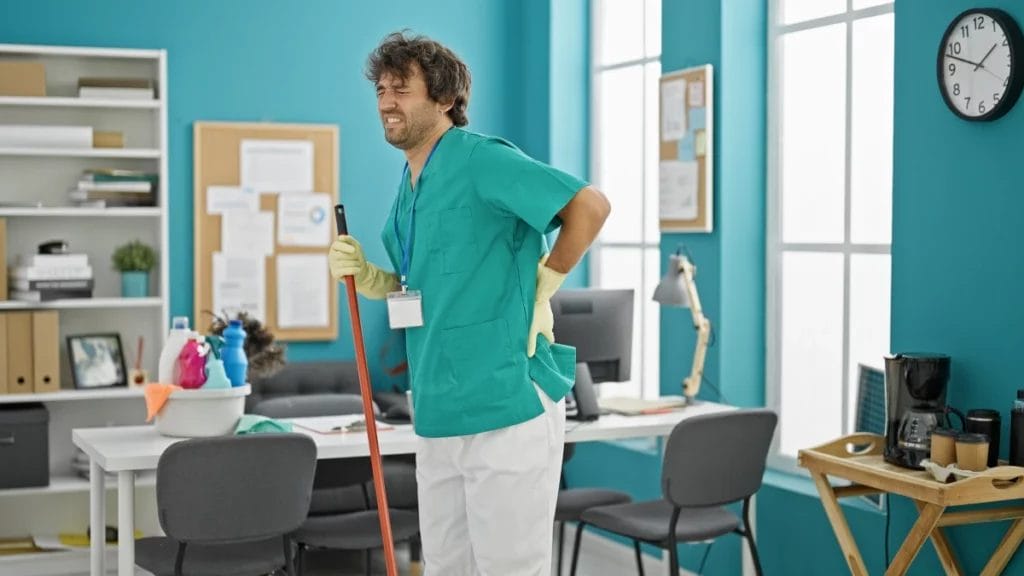
What to Do After an Employee Injury (Next Steps)
If a cleaner on your team gets hurt while working, you have a legal responsibility to report the injury and help with the claims process. Here’s what you need to do:
Step 1: Tell Your Workers Compensation Insurance Provider
Let your insurance company know about the injury as soon as possible. Some want to hear from you within 24 to 48 hours after you find out. Don’t wait; the sooner you report it, the better.
If the injury happened at another business’s location — or if anyone else was hurt or property was damaged — you’ll also need to contact your general liability cleaning business insurance provider.
Step 2: Send In All the Paperwork
Your insurance company will tell you what they need, and the more info you send, the faster the claim can move forward. This usually includes:
- Your report about what happened
- Any forms your state requires
- Medical reports
- Witness notes
- Photos
- Equipment logs (if a machine was involved)
Step 3: Keep Written Records
Try to use email or your insurance company’s online portal whenever possible. If you talk on the phone, follow up with a quick email or note so there’s a clear record of what was said.
Step 4: Keep Your Employee in the Loop
Let the injured worker know what’s happening with their claim. Share updates about when they might return to work and if there are any temporary or lighter jobs they can do while they recover.
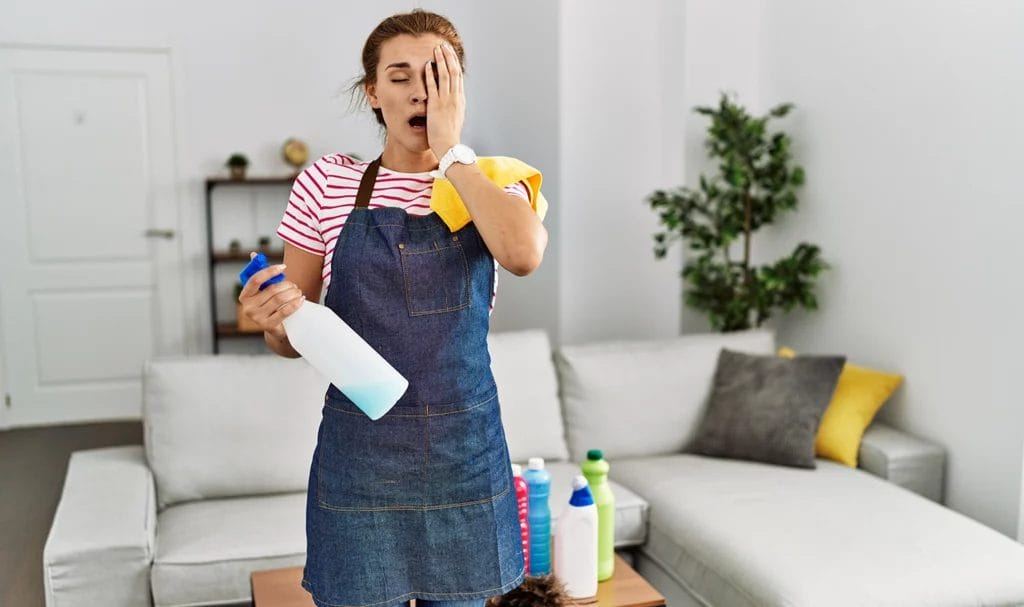
Handle Injury Claims Like a Pro to Reduce Your Risk
Look, mistakes happen. But when it comes to cleaner injury claims, the wrong move can send your business into a tailspin faster than you can say “workers comp paperwork.”
Here’s why it pays to do things right for your cleaners, your clients, and your conscience:
- Legal trouble: Most states have fines for businesses that skip out on workers comp coverage. Some states (looking at you, California and Illinois) can hit you with fines as high as $100,000.
- Bad claims history = higher premiums: Insurers have memories like elephants. If you mishandle claims, you could end up with higher rates or even get flagged as high-risk. Not exactly the kind of attention you want.
- Lost contracts: Your clients want to know you’re running a safe, covered operation. If your insurance isn’t up to date or your safety record’s spotty, they might choose to sue you or take their business somewhere else.
- Damage to your reputation: Injured workers deserve to feel seen and supported. If they don’t, word can get out. One bad review or viral post can do a number on your reputation… and that’s harder to fix than a broken mop handle.
Protect Your People and Business – Get Covered Today!
You need coverage that works just as hard as you do (which is why so many businesses choose Insurance Canopy). Create a custom plan with general liability, workers comp (and more) to fit your business, whether you’re a solo operator or a growing team.
Contact us today to protect your cleaners, your business, and keep contracts on track. Get the coverage you need before you need it. Apply online or reach out to our 5-star rated support team if you have questions or want help getting the right policy.
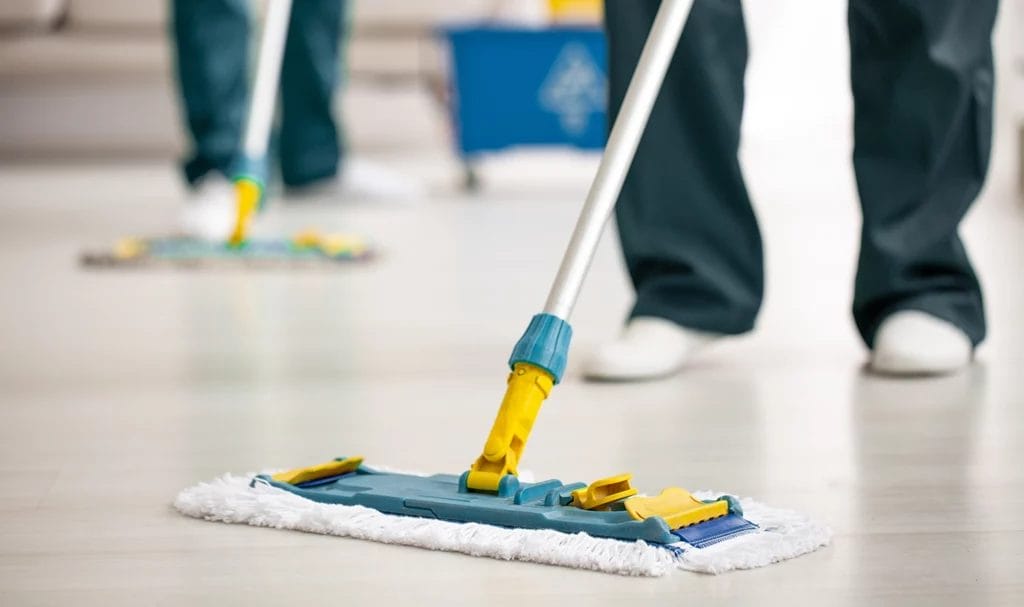
Common Questions About Cleaner Injury Claims
What happens if I don’t carry workers comp?
If you skip getting workers compensation insurance and one of your employees gets hurt on the job, you could face fines, lawsuits, and even criminal charges. Some states impose hefty fines, while others will even suspend your operating license.
How do I file a claim with Insurance Canopy?
You can file claims online in just a few minutes. Log into your user account, navigate to the “Manage Policies” section, and select “File a Claim” to submit the necessary information. A claims adjustor will reach out to you quickly, usually within 24-48 hours, to let you know the next steps and guide you through the process.
What are the common reasons for denied cleaner injury claims?
A cleaner’s injury claim might get denied if:
- The right paperwork is missing or turned in late
- The medical report doesn’t match what was written in the incident report
- The worker was an employee, but was accidentally listed as a contractor
- The injury seems suspicious or unclear
Does workers comp cover contractors or employees?
Workers compensation only covers the actual employees of a business, not contract-based workers. Check your cleaning insurance policy; if it doesn’t say they are included, then they are not covered by your plan.



